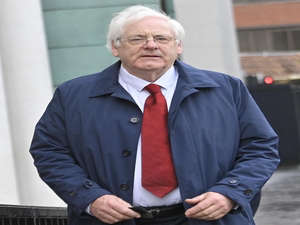
Q Radio News/PA
The Omagh bombing could arguably have been thwarted if police had received all available intelligence, a High Court judge ruled today.
Mr Justice Horner held that full sharing of surveillance and mobile phone tracking evidence may have disrupted dissident republicans behind terrorist attacks in the months leading to the August 1998 outrage.
He identified a potential failure in policy at the time around a de-escalation of security "impaired by political thinking".
Setting out reasons for finding there should be a new investigation into the atrocity, the judge said it was also arguable that a tip-off from an undercover British agent could have contributed to the chances of averting the explosion.
He declared: "I am satisfied that (these) grounds, when considered separately or together, give rise to plausible arguments that there was a real prospect of preventing the Omagh bombing."
The verdict came in a bereaved father's eight-year legal battle against the British Government for refusing to hold a public inquiry into the Real IRA outrage.
A High Court judge has ruled that the Omagh bombing could arguably have been thwarted if police had received all available intelligence. pic.twitter.com/o4kTWhFGj0
— Q Radio News (@qnewsdesk) October 8, 2021
Michael Gallagher's 21-year-old son Aiden was among 29 people, including a woman pregnant with twins, who died in the blast.
No-one has ever been held criminally responsible for the attack which inflicted the greatest single loss of life during the Troubles in Northern Ireland.
Proceedings centred on claims that a range of intelligence from British security agents, MI5 and RUC officers could have been drawn together to foil the car bomb plot.
In July Mr Justice Horner called for fresh investigations on both sides of the border, identifying a legal duty under Article 2 of the European Convention on Human Rights (ECHR).
Although part of his judgment remains under lock and key for security reasons, detailed reasons were provided today in open court.
Stressing this not a conclusive finding that the Omagh bomb could have been avoided, he focused on efforts by the security services to monitor dissident republican activity.
A "fluid" situation of co-operation between the Real IRA and Continuity IRA factions existed at the time.
In the six months leading up to the atrocity there were 24 attacks by dissident terrorists at locations across Northern Ireland.
Part of Mr Gallagher's challenge centred on surveillance operations in events surrounding the Omagh bomb, particularly telephone and vehicle monitoring carried out by the intelligence agency GCHQ.
His lawyers also focused on the tracking and pattern of telephone calls by rogue republicans, including the same mobile being used in Omagh and an attack in Banbridge two weeks earlier.
Information about phone activity from a series of numbers in that period was not made available to the RUC prior to the atrocity, the court heard.
Nor was a satisfactory explanation given for not carrying out cell-site analysis at an earlier stage, which could allegedly have alerted the authorities to a real and immediate risk of Omagh being targeted.
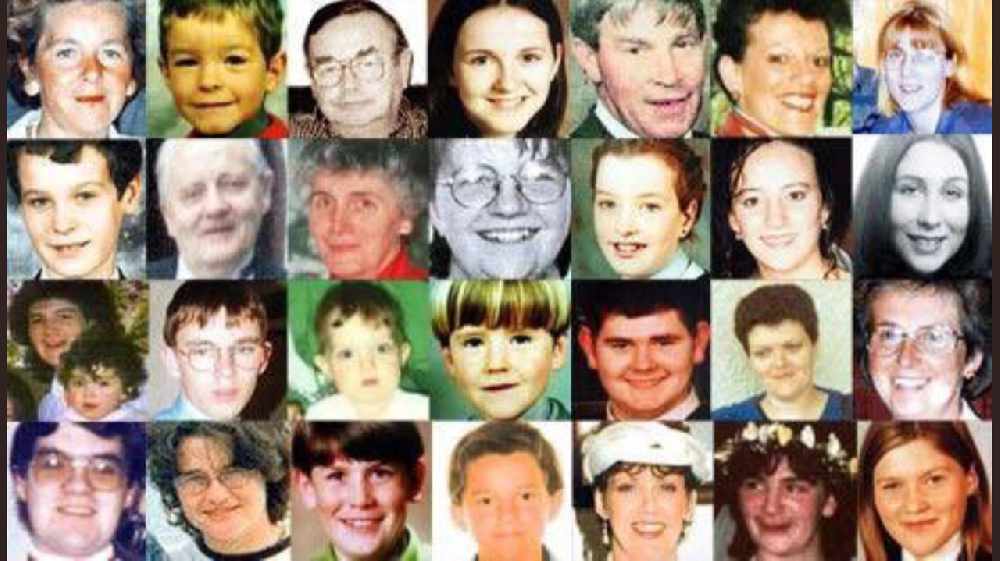
The Omagh bomb victims
Mr Justice Horner pointed out that phone-tracking examinations carried out after the bombing were used to secure judgment against four men held liable in a landmark civil action by some of the victims' families.
This cell-site analysis provides clear prima facie evidence to the authorities about who was involved in some of the terrorist attacks in the six months leading up to the massacre, he found.
He said: "It is arguable that such a pro-active policy would have had a real prospect of preventing the Omagh bomb because it would have made life so much more difficult for the dissident republicans living in Northern Ireland who were intent on carrying out a terrorist campaign."
Despite acknowledging difficulties which the authorities faced at the time, and potential risks to the peace process by an escalation in security, the judge held that those playing leading roles in preceding terrorist incidents could easily have been identified and targeted.
An Article 2-compliant investigation is necessary on that basis, he explained.
A similar inquiry should, if possible, be held in the Republic of Ireland to look at what intelligence was shared between both states.
"If the full panoply of legal powers available to the authorities had been used to disrupt these terrorists' activities, especially if co-ordinated on both sides of the border, then arguably there must have been a real prospect of preventing the Omagh bombing," Mr Justice Horner said.
Similar alleged intelligence-sharing failures were exposed by a senior detective who led the investigation into the fatal blast.
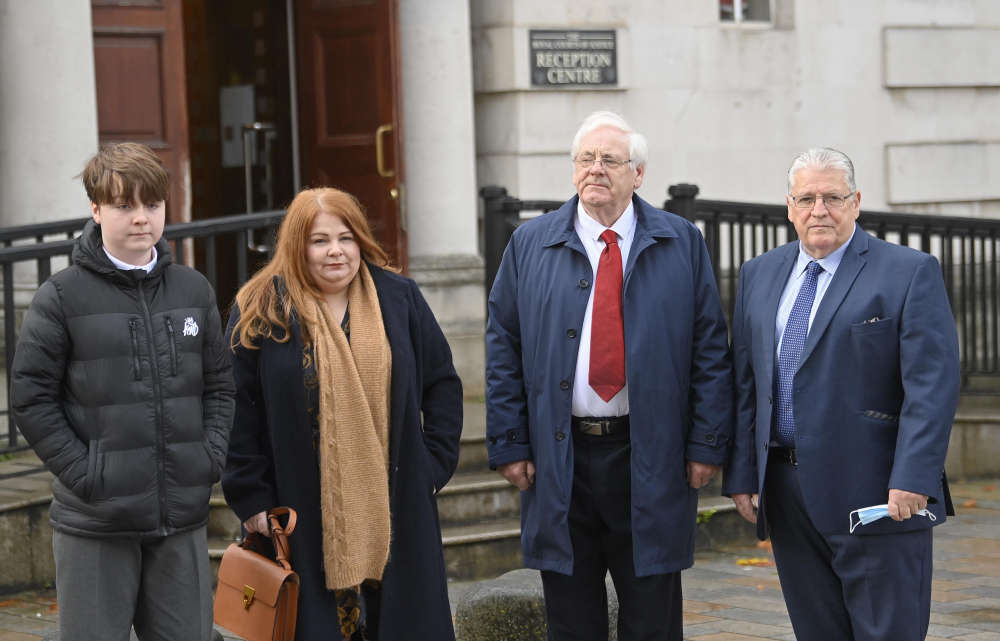
Relatives of Omagh bomb victims (left-right) Flynn Wilkinson, Cat Wilkinson, Michael Gallagher and Stanley McComb arrive at Belfast High Court ahead of the full judgment in the Omagh bomb judicial review
Norman Baxter told the Northern Ireland Affairs Committee that any suspected terrorists' telephone numbers should have been made available to help his inquiry team.
Based on his evidence, the court again identified a potential breach of Article 2 rights.
"There was arguably a failure of policy," Mr Justice Horner said.
"Instead of encouraging the authorities to use all the legal powers given to them to deal with terrorism, there was a de-escalation of security 'which was impaired by political thinking'.
"On the basis of the open evidence there is a plausible argument... that there was a failure to access all the intelligence potentially available in respect of earlier dissident attacks and that this would have enabled the authorities to so disrupt those at the heart of dissident terrorism and that, consequently, there was a real prospect of avoiding the Omagh bombing."
Another part of the legal action centred on information passed to police between June and August 1998 by the former British security agent who uses the pseudonym Kevin Fulton.
A 2001 newspaper article claimed he had tipped off his handler about the Omagh bomb three days before it exploded.
It was alleged that police failed to act because the suspect was also an RUC agent.
According to Mr Justice Horner the information from Fulton, combined with other intelligence about activities of those who planned and planted the Omagh bomb, arguably provided a real prospect of preventing the tragedy.
But he also accepted there may have been good reasons for the authorities adopting a cautious approach, including the risk of exposing a covert human intelligence source in the Real IRA and the ultimate threat of an ending to the peace process.
"Such decisions had to be made in real time and have to be judged in real time and must not be judged with the hindsight of the Omagh bomb and its tragic consequences," he said.
The judge concluded that terrorist activity on both sides of the border by prominent dissident terrorist republicans leading up to the Omagh bomb should now be scrutinised.
He added: "Any investigation will have to look specifically at the issue of whether a more proactive campaign of disruption, especially if co-ordinated, north and south of the border, had a real prospect of preventing the Omagh bombing and whether, without the benefit of hindsight, the potential advantages of taking a much more aggressive approach to policing the suspected terrorists outweighed the potential disadvantages inherent in such an approach."


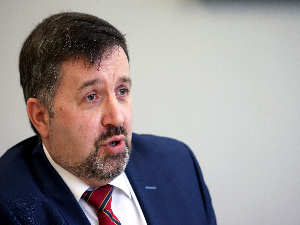 Swann refuses to rule out resigning if budget is not changed
Swann refuses to rule out resigning if budget is not changed
 Fresh inquests ordered into deaths of 15 killed in McGurk’s bomb blast
Fresh inquests ordered into deaths of 15 killed in McGurk’s bomb blast
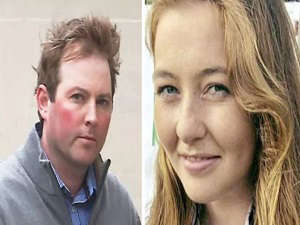 Trial ends after man accused of murder of young showjumper is found dead
Trial ends after man accused of murder of young showjumper is found dead
 A brief hearing and chaotic scenes as Donaldson makes first court appearance
A brief hearing and chaotic scenes as Donaldson makes first court appearance